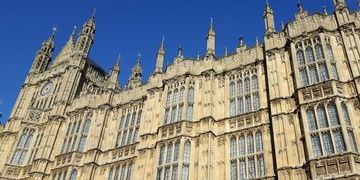James Tooze picks through the release of new investment statistics
Civil departments increase investment in R&D
14 Jun 2019
The yearly publication of statistics on UK government expenditure on Science, Engineering and Technology (SET) gives us the opportunity to see behind the headlines, and delve into more detail about changes in the public funding landscape. These statistics are not to be confused with another ONS publication that looks at total R&D funding across all sectors in the UK (Gross expenditure on R&D). The SET statistics give a comprehensive look of net expenditure of government departments, research councils and higher education funding councils, and the publication also includes estimates of expenditure on knowledge transfer activities and the UK’s contribution to EU funding programmes. The statistics show that the public sector invested £12.2bn in SET in 2017, between departments, research councils and Higher Education councils and inclusive of contributions to EU funding programmes. If you are really interested in the difference between the two publications, you can read more here.
Departmental spend on R&D
Civil government departments and the Ministry of Defence are all responsible for a research budget, which they may choose to use to help meet their departmental aims or address their areas of research interest. These departments can be responsible for up to 30% of public expenditure on R&D, with UKRI and other Higher Education Funding Councils accountable for the rest. This significant chunk of public investment clearly has a crucial role in delivering the current Government’s target to increase the UK’s research intensity.
The good news is that civil departments expenditure on R&D continues to rise in real terms to £3.6bn in 2017, continuing the trend over the last 15 years. What these headline number do not reveal, however, is how expenditure from different departments has changed greatly. The Department for Business (BEIS) and the NHS are responsible for stewarding three-quarters of all civil department investment in R&D, but at the turn of the decade this was just over half.

It is perhaps not a surprise that BEIS is the highest spending department for R&D, and in these statistics Innovate UK is still part of BEIS. The successes and increases in funding for Innovate UK are likely to be a large reason behind this rise, but BEIS has a number of funding streams which support research and innovation.
| Department | % change in R&D expenditure between 2010 and 2017 |
| BEIS | 244% |
| DFID | 76% |
| NHS | 19% |
| DfE | -20% |
| Home Office | -23% |
| DEFRA | -70% |
It is important to consider overall departmental resource budgets over this period, in a time of austerity. For instance, overall day-to-day Home Office budgets decreased by 23% over the same period, mirrored in the drop in its expenditure on R&D. Departments such as Defra, one of the hardest hit over this period, saw it’s day-to-day budgets cut by 31%, but has seen a much more significant drop in its R&D investment.
We think it’s important to reflect on these changes because different departments, with their different priorities, are likely to fund different types of research across the UK. The presence of research capability that can help to drive the UK forward needs support and departments can give a unique client base for R&D investment. The breadth of the UK’s research base is seen as a real strength of the UK, and decreasing the diversity of research funding available may have disproportionate effects on different sectors or organisations.
Civil department expenditure catches Research Council investment
The rises in civil department investments have meant that for the first time since these statistics were collected, 2017 saw civil departments investing more in R&D than Research Councils. This rise is largely down to the huge increases in BEIS investments as seen in the table above, while Research Council investments have stuttered since 2010.

As these statistics are reflecting a time before UKRI was formed, it is important not to confuse the two. As I mentioned before, Innovate UK is considered a part of BEIS in these numbers, and the Research Councils cover the seven councils and exclude investment from HEFCE, now Research England. This balance is therefore set for a change, as UKRI will be in charge of a much larger envelope than the Research Councils seen in this graph.
Destination of public investment
These statistics also give us the opportunity to see where gross public expenditure on R&D goes. The largest recipient of public R&D expenditure in 2017 was the Higher Education sector, receiving 41% of gross public investment which represented just over £5bn worth of investment.

The proportions in the pie chart have remained relatively steady over the last ten years. The category that is labelled as ‘Within government departments’ includes public expenditure for Research Council institutes, NHS Trusts and Local Authorities, as well as R&D carried out within government. Public investment in the private sector continues to feature in a large way, receiving just over £2.5bn in 2017. The overseas contribution can primarily be attributed to the UK’s contribution to EU funding programmes, estimates that are provided by HM Treasury.
The SET stats are one of a few ways we can review the R&D expenditure landscape in the UK. They are a vital window in to seeing how public investments are distributed, and how these balances are changing in a time when the UK is trying to improve its research intensity. As a Government decides to set its plans to increase research intensity, it is more important than ever to highlight the balances and relationships between different parts of the public sector funding different types of research.
The ONS provides an informative and comprehensive brief on this statistical release, you can read that here.
Related resources

This synthesis draws out key policy implications from the findings of a report commissioned by the British Academy and CaSE. The systems-based analysis of the strengths and weaknesses within the UK’s innovation system, ‘From Research to Productivity: A Systems Analysis of UK Innovation Pathways’, was conducted by Cambridge Econometrics.

In 2024, the British Academy and CaSE commissioned Cambridge Econometrics and the Innovation and Research Caucus to conduct this systems-based analysis of the strengths and weaknesses within the UK’s innovation system.

CaSE’s comprehensive analysis of the measures that impact R&D announced in the 2025 Spending Review

CaSE’s response to the House of Lords Science, Innovation and Technology Select Committee inquiry into: Financing and Scaling UK Science and Technology: Innovation, Investment, Industry.